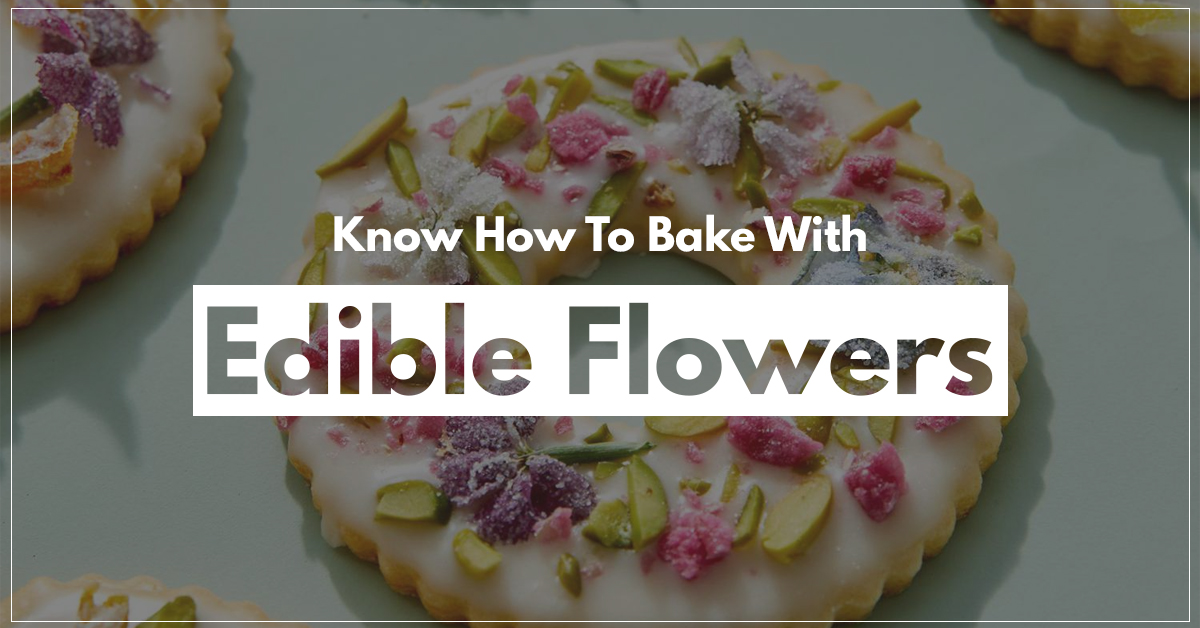Baking with edible flowers is a delightful way to add a pinch of elegance, color, and unique flavor to your creations. The Best Baking Classes in Chennai make it a point to cover all the basics of flower and flavor combinations. From delicate petals to vibrant blooms, edible flowers offer endless possibilities for enhancing your baked goods’ visual appeal and taste. Everything you need to know about baking with edible flowers, from selecting the right blooms to incorporating them into your favorite recipes.
Choosing Edible Flowers:
All flowers are safe to eat, but choosing edible flowers free from pesticides and other harmful chemicals is crucial. Some commonly used edible flowers include roses, Hyacinth Beans, Marigolds, Mint, Nasturtiums, Roquette, snapdragon, Viola, lavender, and nasturtiums. Make sure to purchase your flowers from reputable suppliers or grow them yourself using organic practices. The best Baking Institute In Chennai recommends always positively identifying flowers before using them in baking, as some look similar to toxic varieties.
Preparing Edible Flowers:
Before using edible flowers in baking, it’s essential to properly clean and prepare them to get rid of dirt, insects, or debris. Gently rinse the flowers under cold water and pat them dry with paper towels. Remove any green parts, such as stems and sepals, as they can have a bitter taste. For bigger flowers, such as roses or hibiscus, carefully remove the petals and discard the central reproductive parts.
Edible Flower Varieties and Flavors:
Different edible flowers offer unique flavor profiles that can complement a wide range of baked food. For example, roses have a delicate floral flavor with subtle notes of sweetness, making them ideal for infusing into syrups, jams, and baked goods like cakes and cookies.
Flower Combinations:
Lavender adds a fragrant, slightly herbal flavor that pairs well with lemon and honey in scones, shortbread, and cupcakes. Strawberry, Mango, and Rose Pavlova flowers also go well together. Experiment with different edible flowers to discover the flavors that best suit your taste and recipes.
Incorporating Edible Flowers Into Baking:
There are numerous ways to incorporate edible flowers into your baking creations, depending on the recipe and desired effect. A straightforward method is to garnish finished baked goods with whole or individual flower petals, such as dusting cupcakes with crystallized rose petals or topping tarts with fresh pansies. Flowers can also be used in making salad dressings to make them appealing. You can also infuse flowers into liquids, such as steeping lavender buds in milk for lavender-infused custards or adding rosewater to frosting for a delicate floral flavor. For a more adventurous approach, try baking flowers directly into cakes, cookies, or bread for a stunning visual and culinary experience.
Be mindful of allergies:
Even though most of the flowers are edible, some people may be allergic to specific blooms. This can result in serious illness. Make sure to be aware of their dietary restrictions and allergies beforehand to be on the safe end.
Decorate with Care:
When decorating your baked goods with edible flowers, handle them carefully to preserve their delicate appearance. Gently press the flowers onto frosted cakes, cupcakes, or cookies just before serving to prevent wilting. Alternatively, you can crystallize edible flowers by brushing them with egg white and dusting them with sugar for a beautiful and edible sparkling effect.
Tips for Baking With Edible Flowers:
When baking with edible flowers, there are a few important tips to keep in mind to ensure success:
- Use flowers sparingly, as their flavors can be pretty potent and overpowering if used excessively.
- Avoid heating flowers at high temperatures for extended periods, as the flavor and color will be lost.
- Choose flowers in peak season and at their freshest for the best flavor and appearance.
- Store edible flowers in the refrigerator wrapped in damp tissue until ready to use to keep them fresh and crisp.
- Remove inedible parts of flowers. If you’re unable to distinguish between them, there are Professional Baking Classes In Chennai, which are very useful for beginners.
Conclusion:
Baking with edible flowers is a creative and delightful way to infuse your baked goods with beauty, flavor, and a touch of whimsy. By choosing the appropriate flowers, preparing them properly, and incorporating them thoughtfully into your recipes, you can create stunning treats that are as delicious as they are visually appealing. So, next time you’re in the kitchen, why not add a sprinkle of floral magic to your baking adventures with edible flowers?



